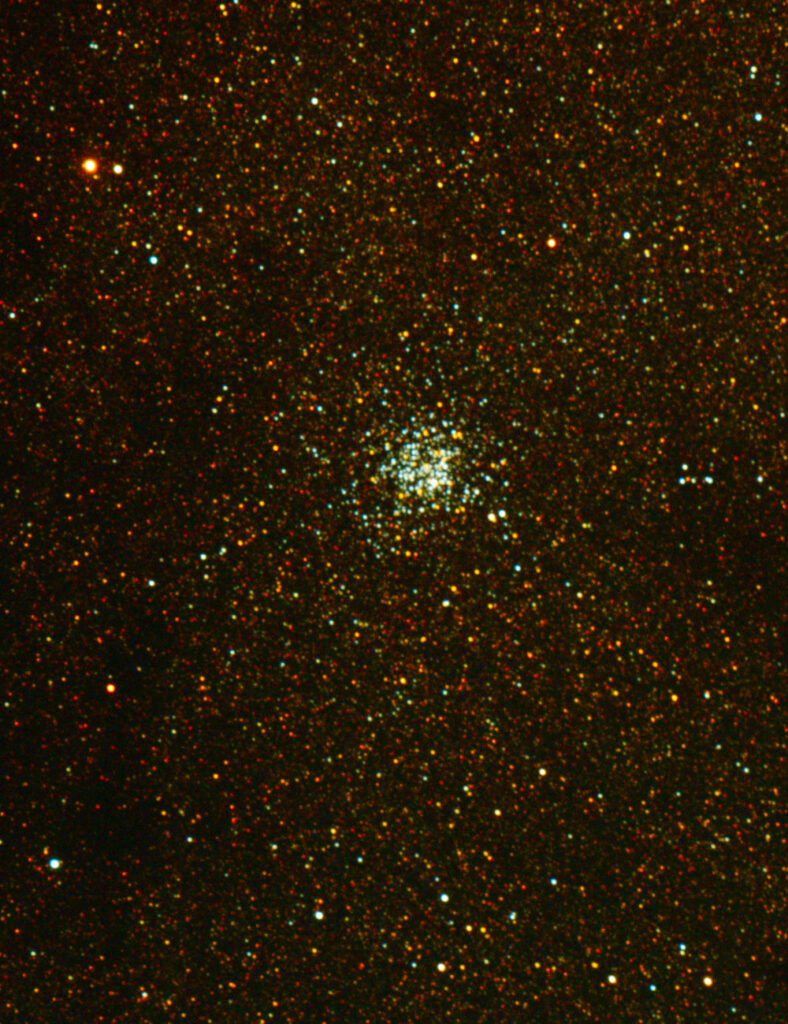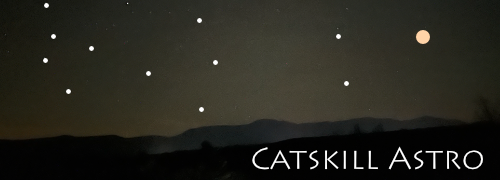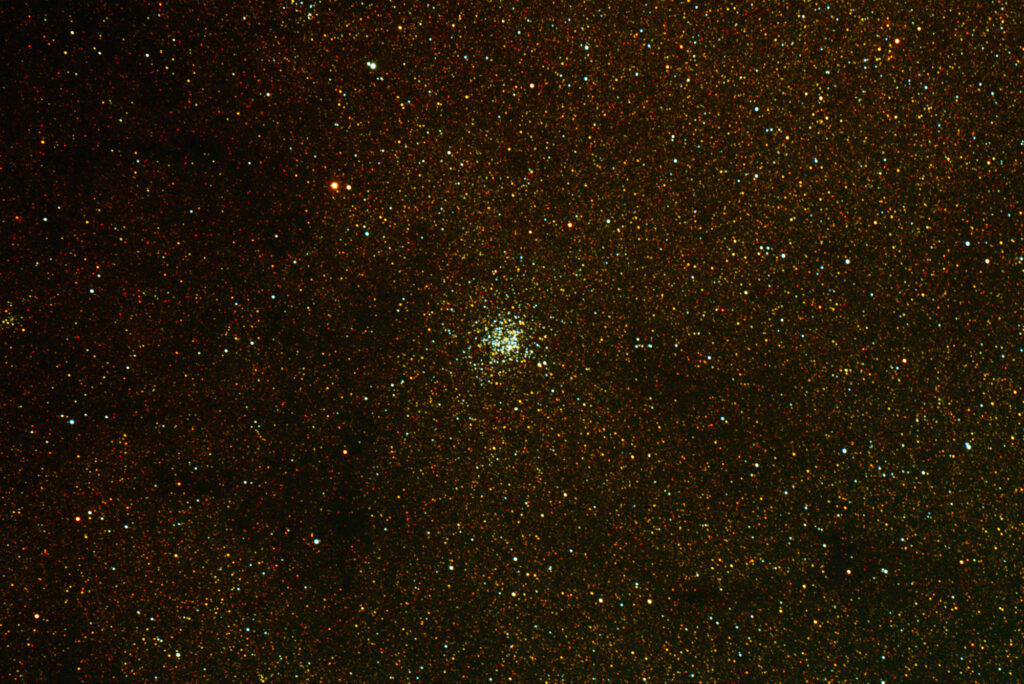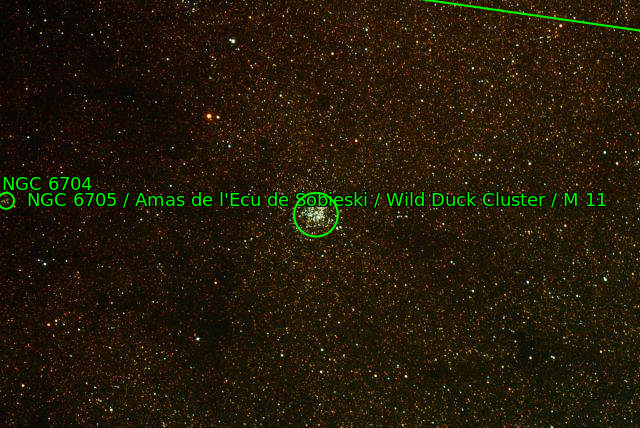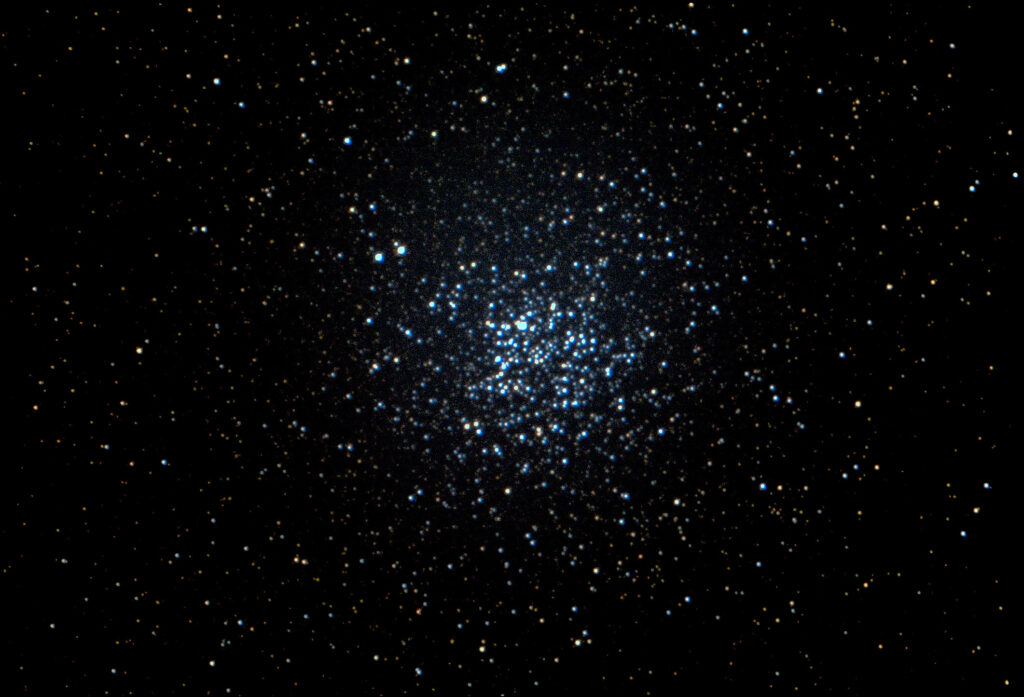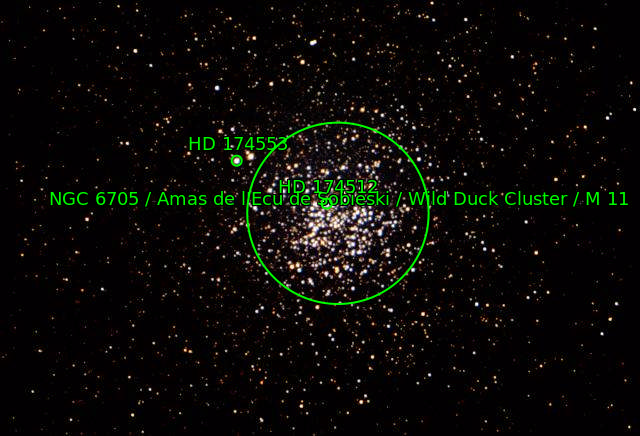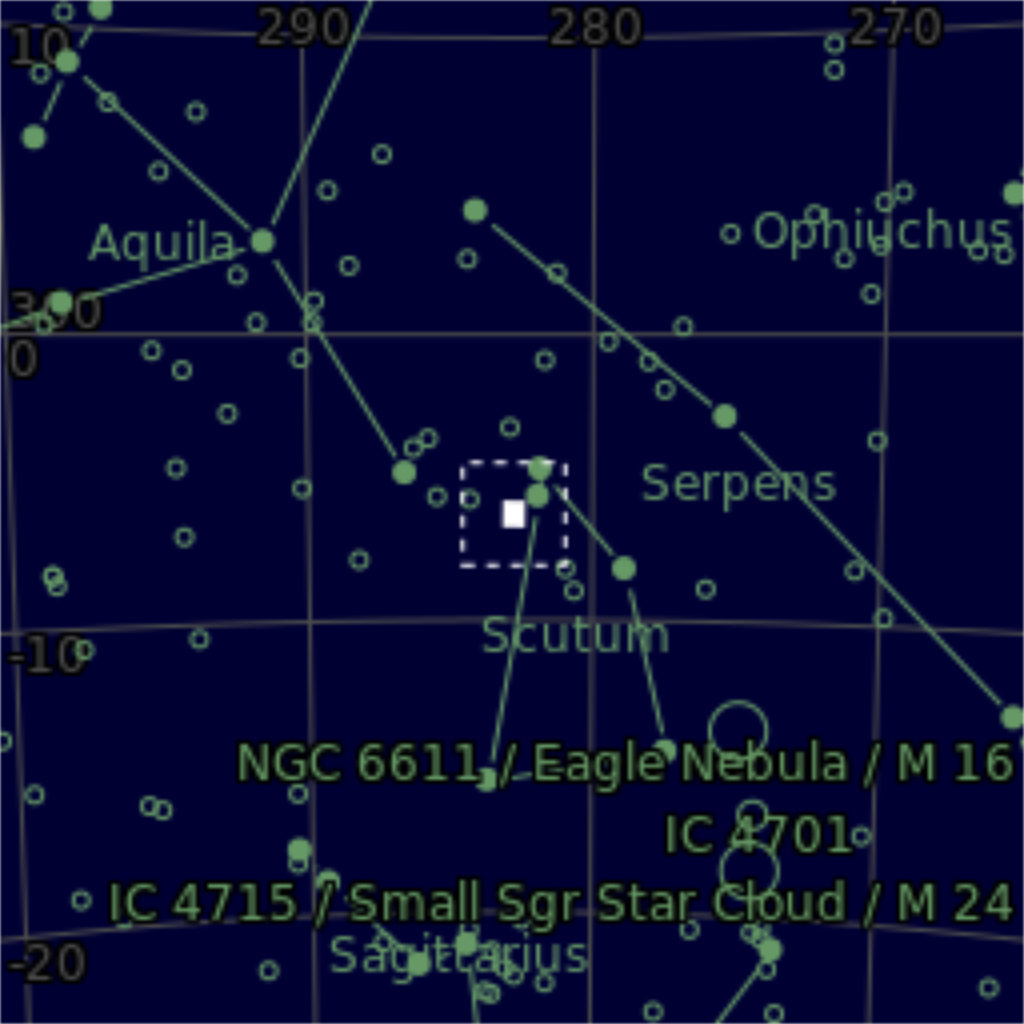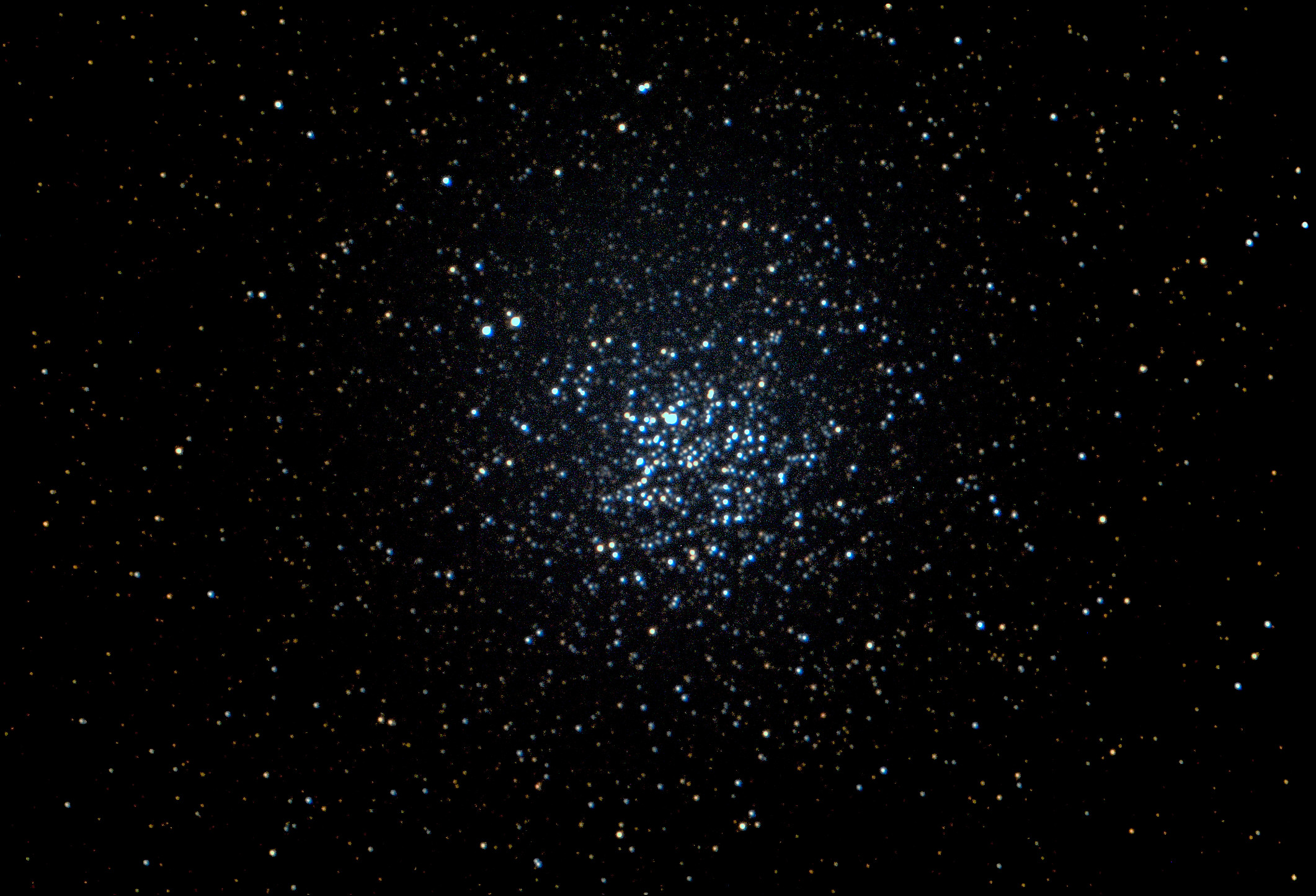| Name | Wild Duck Cluster |
| Designation(s) | M11, NGC 6705 |
| Object Type(s) | Open Cluster |
| Relevant Catalog(s) | All (Chron), Messier, NGC |
| Obs. Lat/Long | 42° 17', 073° 57' |
| Constellation | Scutum |
| Date and Time Observed | 2025-03-09 04:29:55 |
| Instrument | Askar V 80mm w extender f7.5-600mm FL |
| Camera | ASI2600MC-Pro |
| Image Details | Up is 91.9 degrees E of N. Transparency: Good. Seeing: Good. Total integration time was 6m. Exposures 15s@101g, UV/IR Cut Filter. Darks subtracted, no flats. Dithered and recentered in SharpCap. No guiding. |
| Description | M11 was discovered by the German astronomer Gottfried Kirch of the Berlin observatory in 1681. It was apparently first resolved into stars by William Derham about 1733. Charles Messier included it in his catalog on May 30, 1764: "Cluster of a great number of small [faint] stars, ....which one can see only in a good instrument; with an ordinary telescope of 3 feet [FL] it resembles a Comet:". <--> This is a dense "open" cluster, located right on top of the Scutum Star Cloud. Frankly it looks more dense than M4, which is categorized as a Globular Cluster. In the 20th century, astronomers would recognize that GC's are some of the oldest stars in the Milky Way, and can be distinguished by low "metalicity" (that bizarre habit of astronomers to describe as a "metal" any element heavier than Helium). GC's were formed from pristine clouds of mostly Hydrogen. OC's had more metals, but this is a distinction that needed a couple of hundred years to establish. In this earlier era, it was driven by the ability of Messier's telescope to resolve individual stars (as here). Whether OC or GC, this is a handsome cluster. I'm showing two captures here: a wide field view using my brand new ASI2600 with the Askar at 600mm; the other from 2024 using the EdgeHD with reducer. |
| Catalog Links | |
